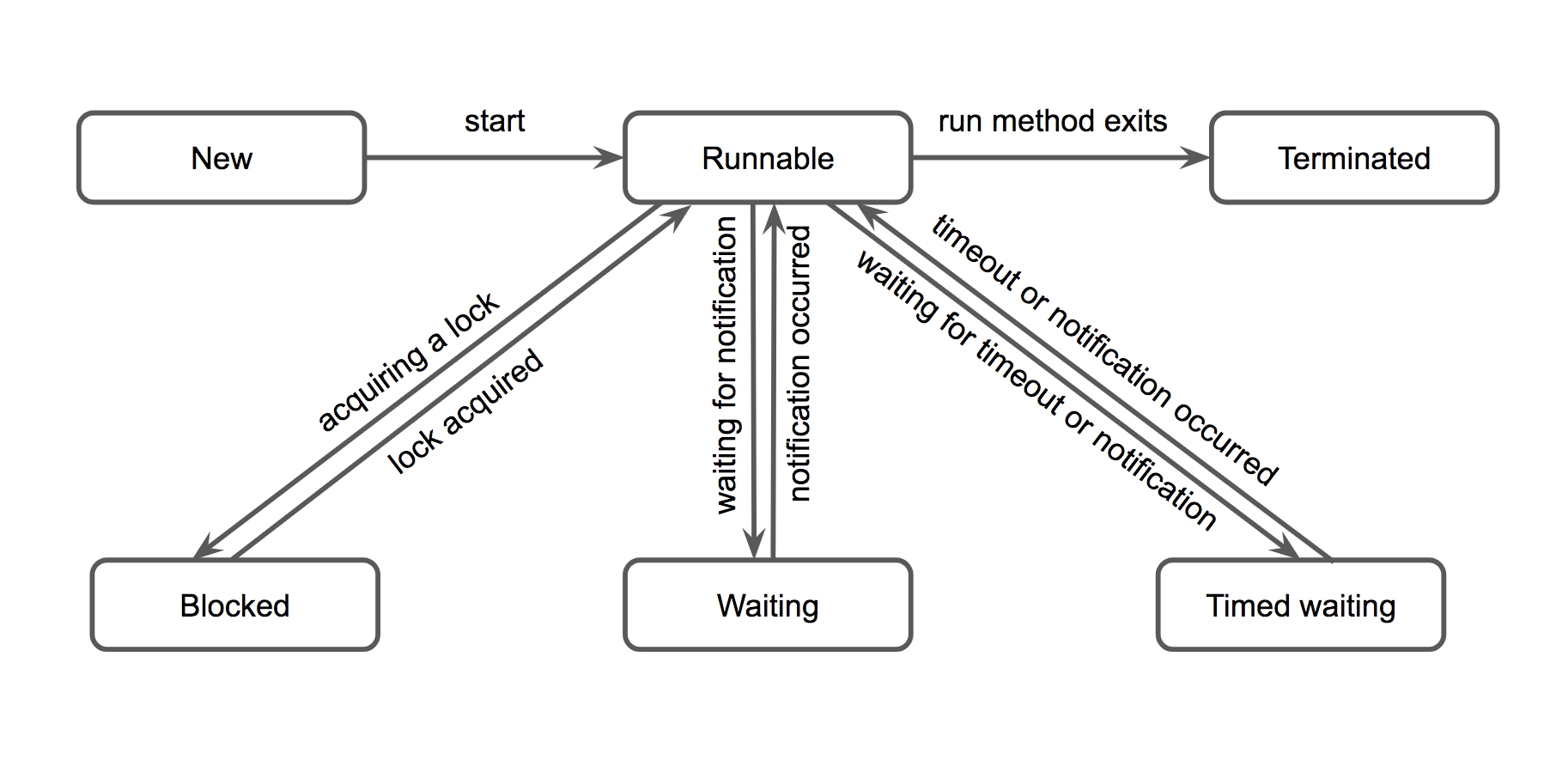2401. Java Concurrency - OverviewMulti Threading
Create concurrent application with threadings.
1. How to Create a Java Thread?
Java lets you create thread in following two ways:
- By implementing the
Runnableinterface. - By extending the
Thread
1.1 Runnable Interface
public interface Runnable {
void run();
}
Create a class to implement the interface.
public class MyClass implements Runnable {
public void run(){
System.out.println("MyClass running");
}
}
Create thread and run it.
Thread t1 = new Thread(new MyClass ());
t1.start();
1.2 Thread Class
Create a class to extend the Thread class.
public class MyClass extends Thread {
public void run(){
System.out.println("MyClass running");
}
}
Create thread and run it.
MyClass t2 = new MyClass();
t2.start();
1.2 Thread States
New- When a new thread is created, it is in the new state. (new Thread();)Runnable- A thread that is ready to run is moved to runnable state. (t1.run();)Blocked- When a thread is temporarily inactive, e.g. (require a lock)Waiting- When a thread is temporarily inactive, e.g. (wait on a condition);Timed Waiting- A thread lies in timed waiting state when it calls a method with a time out parameter. (Thread.sleep(1000);)Terminated- A thread terminates because of either of the following reasons: Normally exits or interrupted.

2. Synchronization
Monitor, lock, race condition.Reentrant Lock, Intrinsic Lock
3. Thread Pool
6. Synchronizers
The java.util.concurrent package contains several classes that help manage a set of collaborating threads. These mechanisms have “canned functionality” for common rendezvous patterns between threads. If you have a set of collaborating threads that follow one of these behavior patterns, you should simply reuse the appropriate library class instead of trying to come up with a handcrafted collection of locks and conditions.
| Class | What It Does | Notes |
|---|---|---|
CyclicBarrier |
Allows a set of threads to wait until a predefined count of them has reached a common barrier, and then optionally executes a barrier action. | Use when a number of threads need to complete before their results can be used. The barrier can be reused after the waiting threads have been released. |
Phaser |
Like a cyclic barrier, but with a mutable party count. | Introduced in Java SE 7. |
CountDownLatch |
Allows a set of threads to wait until a count has been decremented to 0. | Use when one or more threads need to wait until a specified number of events have occurred. |
Exchanger |
Allows two threads to exchange objects when both are ready for the exchange. | Use when two threads work on two instances of the same data structure, with the first thread filling one instance and the second thread emptying the other. |
Semaphore |
Allows a set of threads to wait until permits are available for proceeding. | Use to restrict the total number of threads that can access a resource. If the permit count is one, use to block threads until another thread gives permission. |
SynchronousQueue |
Allows a thread to hand off an object to another thread. | Use to send an object from one thread to another when both are ready, without explicit synchronization. |